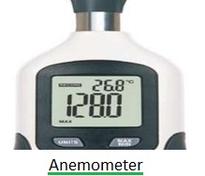Spectrophotometer or Spectrometer: An Overview
Advertisement
This page provides a fundamental understanding of spectrophotometers and spectrometers. It covers the basics, key benefits, features and highlights reputable vendors and manufacturers in the field.
What is a Spectrometer?
In physics, a spectrometer is an instrument designed to measure the electromagnetic (EM) spectrum. This spectrum is typically represented as a graph with wavelength on the X-axis and intensity on the Y-axis.
When the spectrometer is used specifically within the optical domain (visible light and related wavelengths), it is often referred to as a spectrophotometer.
Spectrophotometer Explained
A spectrophotometer is used to measure the properties of light over a specific range within the electromagnetic spectrum. It has a wide range of applications:
- Astronomy: Analyzing radiation emitted from astronomical objects to understand their composition and behavior.
- Chemical Analysis: Determining the chemical composition of samples by analyzing their light absorption and transmission properties.
Key Features of a Spectrophotometer

Spectrometer Specifications: Vernier Software & Technology
The following table outlines some of the key specifications of a Spectrometer offered by Vernier Software & Technology:
| Specifications | Spectrophotometer |
|---|---|
| Wavelength Range of Measurement | 380nm to 950nm |
| Resolution | 3nm |
| Accuracy of Wavelength Measurement | 2nm |
| Photometric Accuracy | +/-5% |
| Power Source | USB cable from computing devices (PCs, laptops, etc.) |
Other Spectrophotometer Vendors
Here’s a list of other notable spectrophotometer vendors:
- X-Rite
- JINAN PRECISION TESTING EQUIPMENT CO.,LTD (Models: V-5000, UV-5200/5300/5500, etc.)
- ProSource Scientific (Model: SQ2800)
- Cadex Inc.
- Cole-Parmer India Pvt. Ltd. (Genesys-20 Spectrophotometer)
Benefits of a Spectrometer or Spectrophotometer
- Accurate Chemical Analysis : Provides precise identification and quantification of chemical compounds in various samples.
- Broad Applications : Used in fields like pharmaceuticals, environmental science, food safety, and medical diagnostics.
- Non-Destructive Testing : Analyzes samples without altering or destroying them, preserving their integrity.
- High Sensitivity : Detects even trace amounts of substances, making it useful for forensic and biomedical research.
- Quality Control : Ensures product consistency in industries like pharmaceuticals, cosmetics, and manufacturing.
- Environmental Monitoring : Helps detect pollutants in air, water, and soil, aiding in pollution control.
- Advanced Optical Measurement : Measures wavelength, intensity, and absorption properties of light with high precision.
- Speeds Up Research & Development : Facilitates advancements in chemistry, biology, and material science.
Conclusion
A spectrometer or spectrophotometer is a crucial instrument for scientific analysis, offering precision, sensitivity, and versatility across various industries. Its ability to identify and quantify substances accurately makes it indispensable in research, quality control, and environmental monitoring, driving innovation and ensuring safety across multiple domains.
Advertisement
 T&M
T&M 


